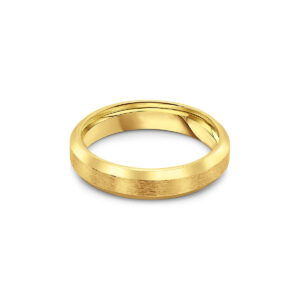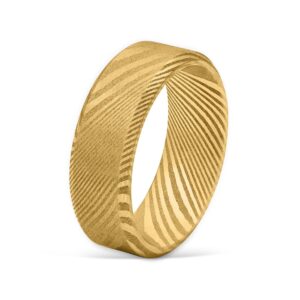When it comes to wedding rings, one of the first questions people often ask is which finger the ring should go on. While the answer may seem straightforward, the practice of wearing a wedding ring is rich in tradition, symbolism, and even some cultural variations. Across the globe, different societies have chosen specific fingers to symbolize the commitment and love that a marriage represents. In this article, we will explore the historical, cultural, and symbolic aspects of which finger a wedding ring should be worn on, and how these practices have evolved over time.
Historically, the tradition of wearing a wedding ring on the “ring finger” of the left hand dates back to ancient times. The ancient Egyptians are often credited with the first known use of wedding rings. They believed that the vein in the fourth finger of the left hand, often referred to as the “vena amoris” or “vein of love,” ran directly to the heart. This romantic notion led to the widespread belief that the left ring finger was the most fitting place to wear a symbol of eternal love and commitment. Though modern anatomy has proven that the “vena amoris” is more of a myth, the tradition persists in many cultures today.
-
 Titanium Steel Brushed Yellow Gold Wedding Band$59.95
Titanium Steel Brushed Yellow Gold Wedding Band$59.95 -
 Matte Pattern Yellow Gold Damascus Steel Wedding Ring$99.95
Matte Pattern Yellow Gold Damascus Steel Wedding Ring$99.95 -
 Silver Matte Pattern Damascus Steel Wedding Ring$99.95
Silver Matte Pattern Damascus Steel Wedding Ring$99.95 -
Crystal Leaf Ring-Leaf Wedding Band$99.95
-
Gold Round Cut Solitaire With Wedding Band$99.95
-
Rose Gold Round Cut With Wedding Ring$59.95
-
Triple Band Wedding Ring With Oval Cut$99.95
-
Gold Three Band Ring Jewelry Splittable$124.95
-
Rose Gold Stackable Minimal Classic Wedding Ring Sets$64.95
In Western societies, wearing a wedding ring on the left hand has become almost universal, particularly in countries like the United States, Canada, and the United Kingdom. For many, this is simply a matter of tradition and the recognition of what is considered the norm. But, of course, not all cultures share this practice. For instance, in some Eastern European and Latin American countries, people wear wedding rings on the right hand. Countries like Russia, Greece, and Germany, for example, traditionally place the wedding ring on the right hand. This cultural divergence highlights how customs evolve based on local values, religion, and historical influences.
For many couples, the decision to wear a wedding ring on the left or right hand may also be influenced by religious beliefs. In some religious traditions, the placement of a wedding ring is symbolic of a divine covenant. For example, in some Christian denominations, the ring is placed on the fourth finger of the left hand because it is associated with the heart and is believed to represent the couple’s commitment to each other before God. However, some Jewish wedding traditions follow a different approach, where the wedding ring is worn on the right hand. This can also be traced back to Jewish customs that involve specific rituals and meanings attached to the act of placing the ring.
Aside from religious or historical reasons, the finger on which the wedding ring is worn can also be influenced by personal preferences. Some people, for example, may prefer wearing their ring on the right hand for comfort or because it feels more natural to them. In some cases, people may wear their wedding ring on a different finger altogether, especially if they have a reason, such as a medical condition, that makes wearing it on the traditional ring finger uncomfortable. There are also people who choose to wear their wedding ring on their middle finger or index finger. The placement of the ring, in these cases, might be a personal or practical choice, but it can still carry the same level of emotional and symbolic significance.
In recent times, there has also been a shift toward unconventional engagement rings and wedding rings. With the increasing popularity of custom jewelry and unique designs, some couples opt for rings that do not follow traditional norms. For example, some may choose to wear rings with their partner on a finger other than the left ring finger, or even choose to wear matching rings that both partners wear on the same finger. This reflects broader changes in society, where more people are opting for non-traditional wedding customs that fit their personal preferences and unique expressions of love.
Some couples also engage in practices that blend multiple cultures. For example, in some intercultural marriages, one partner might choose to wear the wedding ring on the left hand in line with their partner’s culture, while the other wears it on the right. This is often a reflection of respect for both traditions, as well as a desire to symbolize the unity of two different cultural backgrounds. In these instances, the finger on which the wedding ring is worn becomes a sign of deeper meaning, representing not just the bond between two people but also the blending of their cultures and histories.
It is worth noting that while the placement of the wedding ring is important, the significance of the ring itself is even more profound. The wedding ring is a symbol of the bond between two individuals, transcending mere tradition. It represents commitment, unity, and the promise to share a life together. In many ways, the ring, regardless of the finger it is worn on, serves as a reminder of the vows taken and the journey that lies ahead for a married couple.










